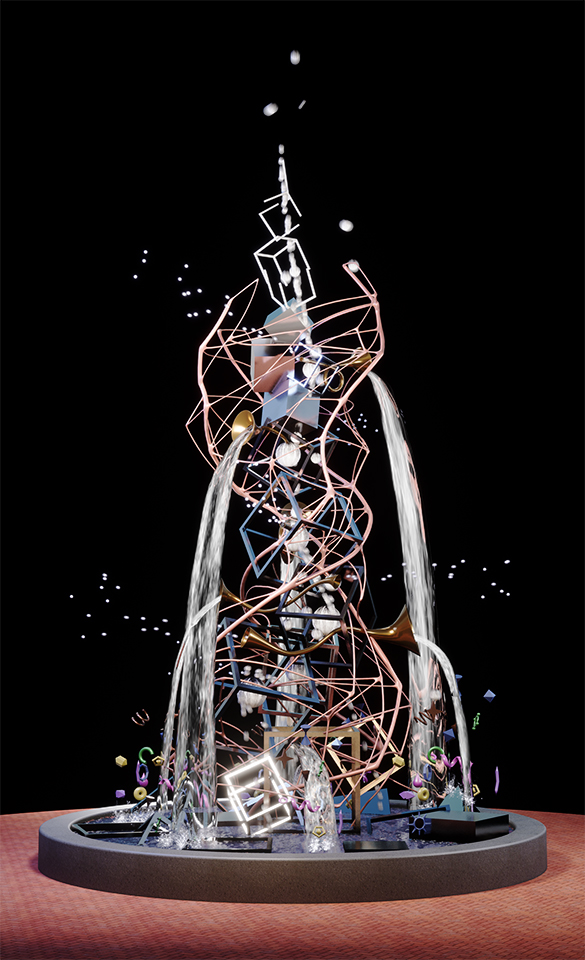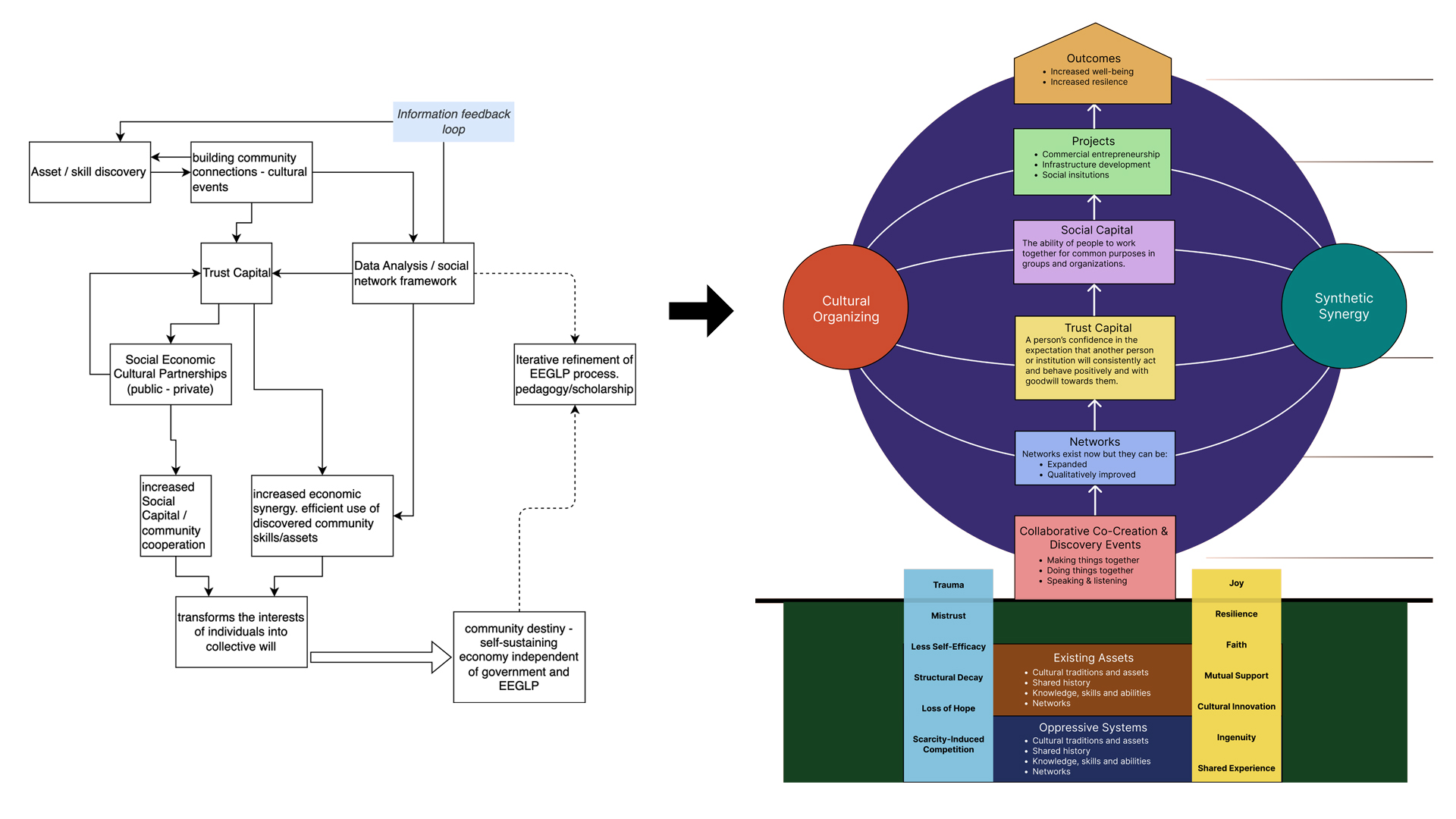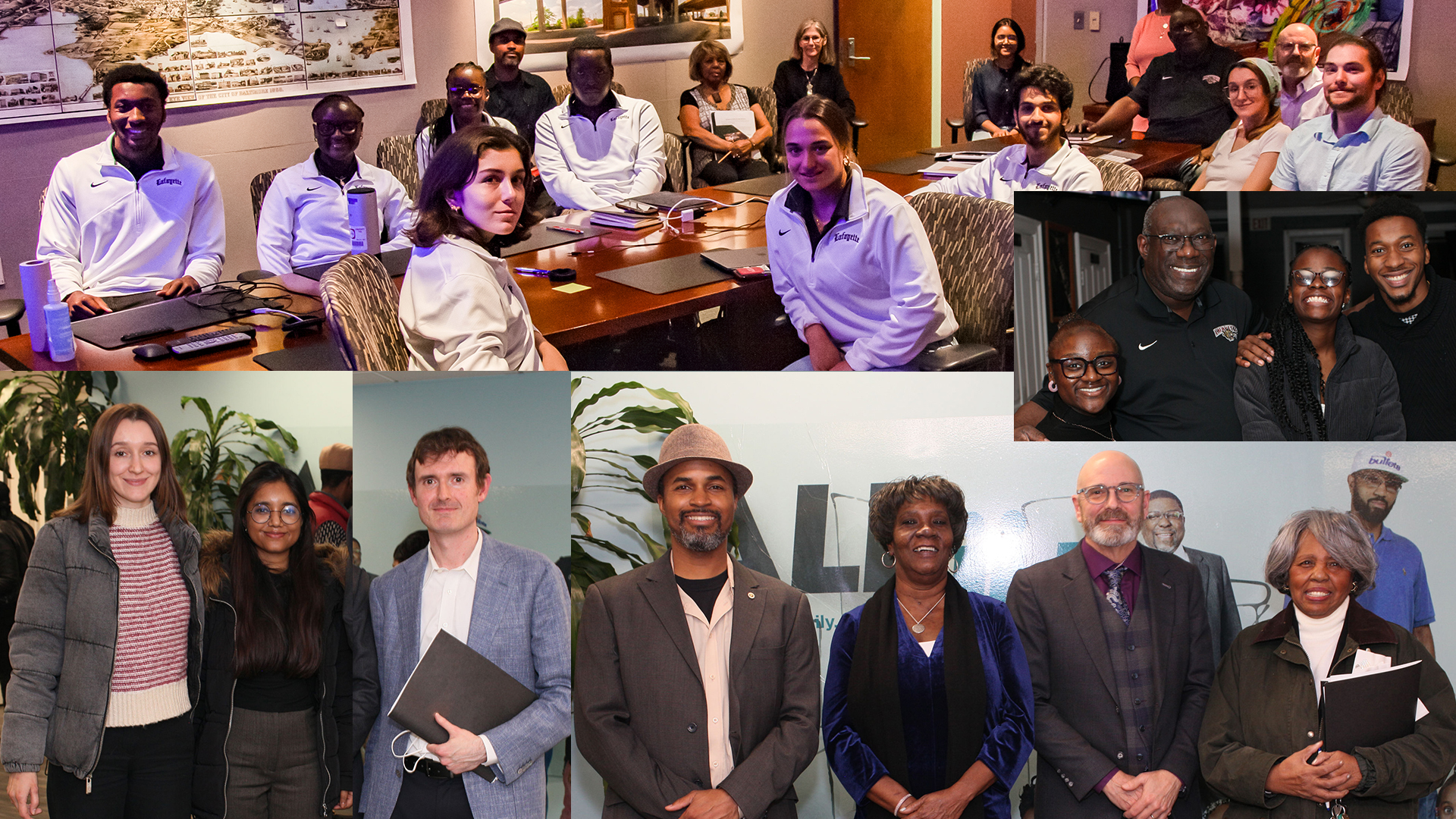
Celebrating and Visualizing Culture as a Foundation of Economic Development
This work is the latest result of a collaboration between cultural and community organizers working in West Baltimore’s Penn-North community, and the Imaging Research Center faculty, staff, and students that has been sustained for ten years. The IRC’s interest in grounding the research of the IRC in the lives of the people of Baltimore’s communities, and in centering culture in the IRC’s approach to using new forms of media to meet public challenges. The collaboration has produced numerous experimental media projects to make the complexity and richness to be found in the West Baltimore community seen and heard in new ways.
In 2020, public economists Gladstone (Fluney) Hutchinson and Donald Harris (father of Kamala Harris), began to work with organizers Denise Griffin, John Harris (no relation to Donald), and others connected with the Arch Community Network at Baltimore’s historic Arch Social Club on a new kind of plan for community economic development in West Baltimore. Hutchinson and Harris had been successful work in other countries, and in the coal towns of Kentucky here in the US, working with communities to imagine economic development as the end product of a process of nurturing culture, strengthening and expanding networks, developing social capital, and establishing entrepreneurship so that the community owns and controls what it makes and does rather than allowing those from outside the community, who may have ulterior motives, to shape and control their development.
Gladstone, an associate professor of economics and policy studies at Lafayette College and founder of the Economic Empowerment and Global Learning Project (EEGLP) contextualized the project saying “West Baltimore is going through the reimagining process about what its arts and cultural environment means for the Black community today.” In a project document entitled Empowering a Renaissance in West Baltimore, project authors state that “Particular focus will be given to awakening West Baltimore latent assets, including cultural and creative ones, and the community’s deeper and more meaningful engagement with the value and wealth-building dimensions of entrepreneurial capitalism.” Hutchinson believes that to thrive, communities in which he has worked, from Appalachia, to Honduras, Jamaica, and New Orleans must build capacity upon the assets they find within their communities, and thus own what they build, And to do that, the development plan Hutchinson and Harris have developed begins with lifting up and amplifying community history and culture as the basis of establishing networks of trust capital which are necessary to build the social capital needed for business and other economic development efforts.
Arousing Imagination
Hutchinson believes requires once again determined intentionality and resilient agency, as well as bold imagination and enlightened cooperation among and across stakeholders, including community organizations, government agencies and the private sector. Such motivation and strategy best foster a systematic approach to identifying challenges and solutions and their calibration and implementation into equitable, inclusive and dynamically sustainable partnerships that can modernize and transform the economy and culture of West Baltimore. The process of its design and pursuit, and its success would demonstrate how distressed communities like West Baltimore could smartly and strategically recover and modernize into becoming dynamically competitive, resilient and sustainable in their creation of wealth and prosperity and a socially desirable environment.
The Lafayette group, with organizers Griffin and Harris approached the IRC in 2021 because it knew these ideas were complicated and hard to explain. They wanted to collaborate to find an aspirational way of introducing their culture and entrepreneurial theory of development to the community. Because of the ongoing IRC interest in finding culture-based approaches to social improvement across the board, faculty, staff and students became interested immediately. What followed was an eighteen-month long process of meetings that led to the image you see to the left: a virtual, interactive, animated model a sculptural fountain which organizers hope to see built at the center of the Penn North community. Lafayette college students along with other students from Coppin and Morgan State universities to investigate the people and culture of West Baltimore, and to analyze the existing networks that connected them with other organizations in Baltimore.
The process of discovery and creation that resulted in the final work began with IRC researchers working to understand the EEGLP theory of development and finding within it the conceptual basis of a compelling visual narrative from which an artwork could be imagined and designed. The diagram below organizes that information.

The economic development concepts were further condensed into the points below and are represented in the sculpture by the forms that are bolded in those descriptions. This said, there is ambiguity in each form and they can be interpreted differently by different people to connect with their own understanding of each:
- The pool of water in which the sculpture sits represents HISTORY, which is filled with events and experiences that can lead to community resilience, joy, faith, mutual support, innovation and a shared sense of belonging, but also history may also hold trauma, mistrust, reduce self-efficacy, and lead to structural decay, loss of hope, and detrimental competition due to scarcity. Everything below the water line (which extends 30 virtual feet downward which is as far as the sculpture extends upward) represents history. The water line itself represents the present, and as you move up the sculpture, you are moving toward and into the future.
- The small, floating, and varied forms and colors represent CULTURAL ACTIVITY and collaborative co-creation events support dialogue between community stakeholders and celebrate shared history, cultural traditions and values. Such enterprise strengthens community networks, and activates community assets.
- The copper-colored mesh that spirals upward represents strong COMMUNITY NETWORKS, if transparent to the community, build TRUST CAPITAL: confidence that community members and organizations will act positively and with goodwill, allowing community members to feel safe, take risks, and cooperate with one another. Trust capital promotes and conducts synergy and energy (thus the choice of copper as a material).
- The cubes that are solid under the water but become open as they rise represent SOCIAL CAPITAL emerges from trust capital. Community members work together for common purposes in groups and organizations, constructing a vibrant economic framework with entrepreneurial aspirations. Social capital can also be spurred and catalyzed by efforts that originate outside the community.
- The horns, into which tiny round elements disappear, and out of which water flows represent DISRUPTIVE INNOVATIONS (positive or negative) from outside a community, (such as social network analysis to assess network quality and transparency, can increase synergy and be synthesized to create value such as trust capital.

The recently-completed, virtual work has been presented at the annual Imaging America conference in 2023, and will be premiered for the larger Baltimore community in August of 2024, at ArtScape, Baltimore’s annual festival of the arts. Ultimately, the goal is to build the sculpture/fountain in the heart of the Penn-North community, and to develop programming to engage residents in considering what it represents and what that could mean for development of the community.
Researchers and Creators
Art and Project Direction: Lee Boot, Director, IRC
Modeling and Animation: Ryan Zuber, Technical Director, IRC
Interactive Programming: Tristan King, Lead Developer, IRC
External Collaborators
Collaborating Economist: Gladstone (Fluney) Hutchinson, Professor of Economics, Lafayette College
Community Organizers: Denise Griffin; John Harris; Marion Blackwell
Students
Modeling, Animation, Development:
Fahmida Hossain; Liza Aleinokova, Graduate Students, Intermedia and Digital Art, Department of Visual Arts
Iman Asfari; Vivian Yeh, Undergraduate Student, Departments of Visual Arts

Funding
$25,000. Lafayette College